⇠ back to “Look out for…”
[NB: open any photo with click/tap for an enlarged version in a new tab.]
Some Cumbrian Crocuses
‘Free-growing’ crocuses seem much more widespread than was suggested twenty years ago in A Flora of Cumbria, which reported fewer than twenty sites, for just two species of spring-flowering crocus. (Bear in mind however that for recording purposes for that publication, garden escapes had to be “out of sight of a dwelling” to be countable.) There is always much debate on whether the very numerous escaped, dumped, or ‘planted in the wild’ garden plants should be recorded and reported. It’s worth consulting the BSBI’s guidance on this page for the current ‘official’ position.
With vast arrays of cultivated plants available to ‘escape’, hybrids a long way (in genetic terms) from their wild ancestors, dubious labelling, outdated taxonomies, etc., the accurate naming of wild-growing crocuses is problematic. I offer a simplified – perhaps reductive – account.
“New Stace”– Clive Stace’s New Flora of the British Isles, edition 4 (2019) – provides new names for two of the three common taxa we see in the wild – as below. Since it is inevitable that the older usages will long persist, one should be aware of the various alternatives, and to what and how they were originally, and are currently, applied.
The following discussion covers only the spring-flowering crocuses.
Yellow/orange-flowered
Of the yellow/orange-flowered plants, the most frequent seems to be ‘Yellow Crocus’, now Crocus × luteus (C. angustifolius × C. flavus; previously C. × stellaris). The popular crocus cultivar ‘Dutch Yellow’ apparently has this parentage. This hybrid is typically a rich orange-yellow, but has some, or a lot, of dark streaking running up the basal tube and the outside of the ‘petals’ (strictly: tepals). Leaves are about 2 mm wide. The BSBI database national maps show severe ‘recorder bias’ for C. × luteus, with some counties showing solid coverage, whilst neighbouring counties have none! Significantly, Stace expresses doubt as to whether either of its parents currently occur in pure form ‘in the wild’ in the UK.
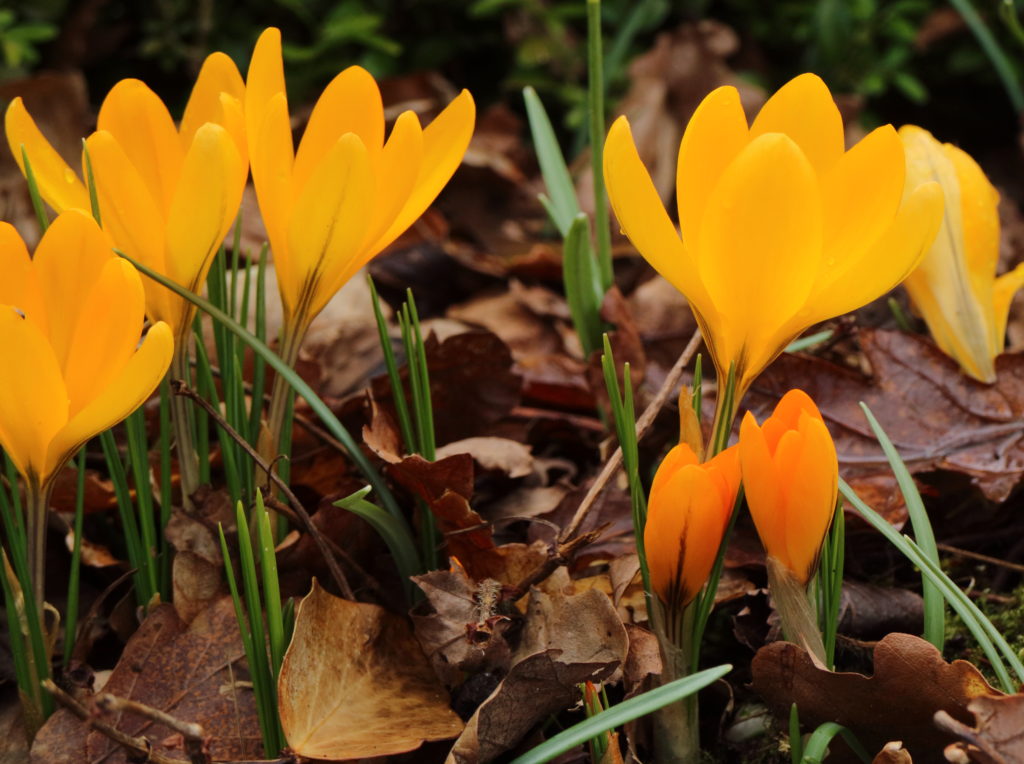
The ‘Golden Crocus’, C. chrysanthus, not currently on record for the county, may be similar in flower-colour and streaking. Forms of one may approach forms of the other. Is there a certain way of telling them apart from the flowers??
The definitive difference requires exhumation of a corm – often an awkward procedure, as corms may be several inches deep. Although you can replant a corm, you may not want to go to this extreme, and indeed it risks censure if attempted under the gaze of the public! The corm-coat of C. × luteus has obvious strong vertical pale fibres (as below), whilst C. chrysanthus is very different, with a smooth, ‘onion-like’ coat which splits horizontally. (For the moment, here’s a link to a picture of the chrysanthus corm.)
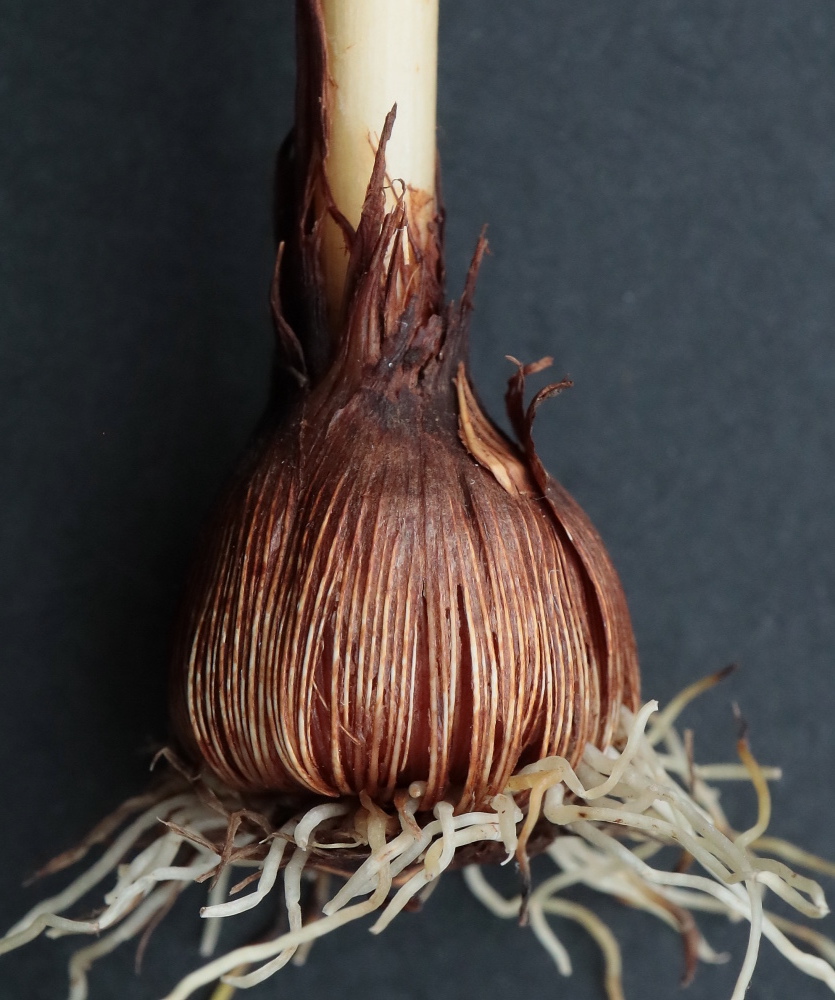
C. chrysanthus is far less recorded than C. × luteus, with none (yet) in Cumbria, as previously stated. Do keep an eye open for it (and preferably take photos showing the features, which should include the corm-coat).
Blue/purple/white-flowered
‘Early Crocus’, C. tommasinianus, despite being very fragile and readily battered by the weather (as in the second picture), does often live up to its name and emerge before the others in this group. It is obviously pale, with its tube being white and tepals mauve. The tepals are very short in relation to the tube which is distinctively long (hence the fragility).
Leaves are usually less than 3 mm wide. It is said to seed freely, and is cropping up in some out-of-the-way places.
It can gape open very widely in warm sun…
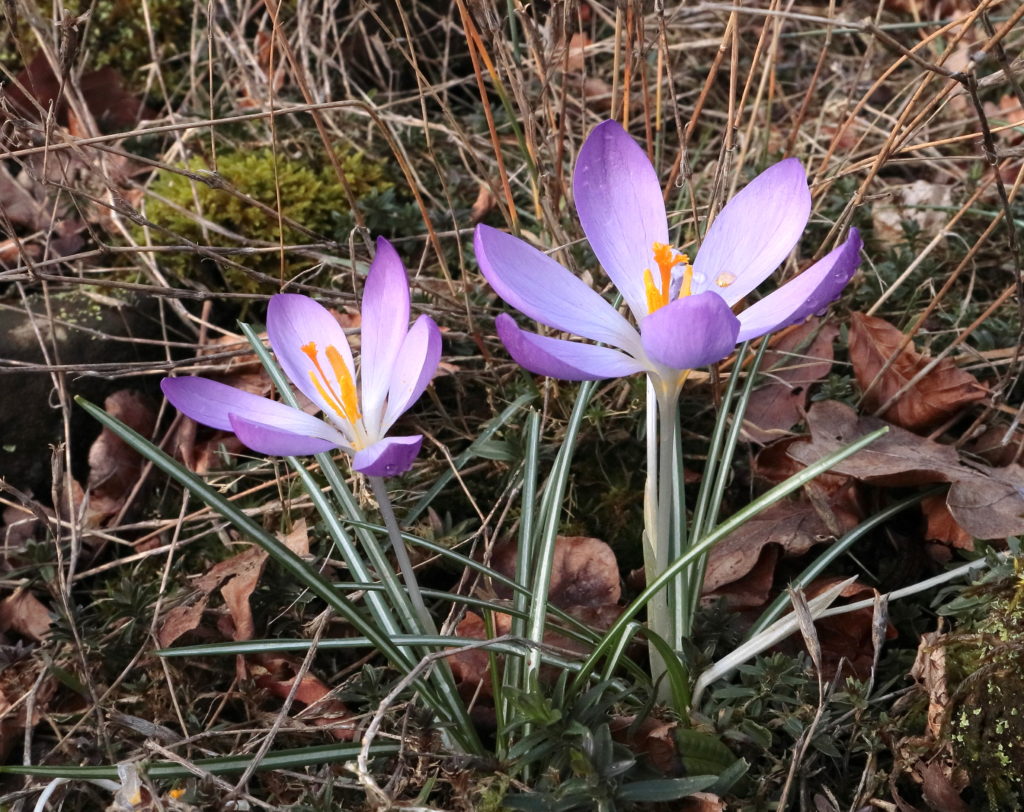
… but more often remains closed. The flowers in a clump may emerge over several weeks, as here:
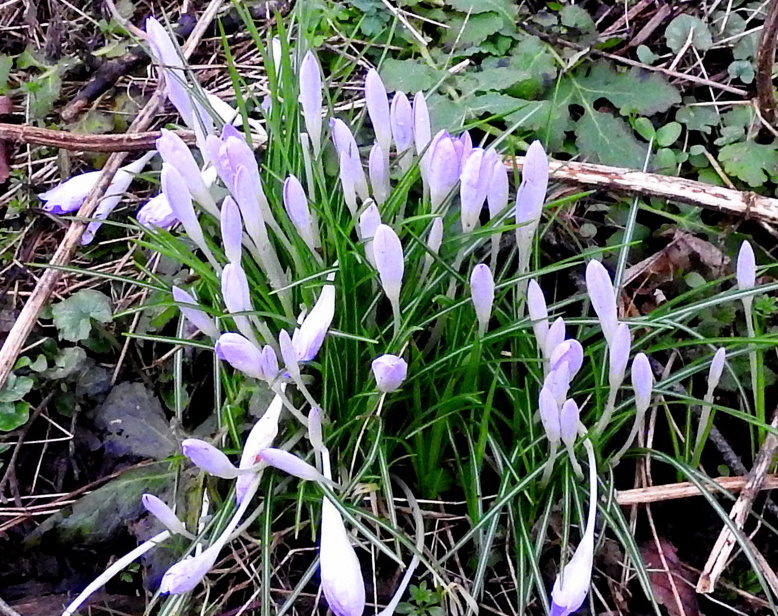
In ‘Spring Crocus’, C. neapolitanus (note the new name; previously C. purpureus or C. vernus), the tepals are long and wide, and tube short, compared to C. tommasinianus. The multifarious cultivars comprise a huge range of forms! The tube is typically deeply coloured purple (at least at the apex), but can be white throughout, whilst the tepals may be shades of deep rich purple right through to white, and variously – and beautifully – streaked. The style equals or exceeds the stamens. Leaves are 4–8 mm wide. Non-flowering clumps may often be found, the wide leaves perhaps allowing identification as this species.
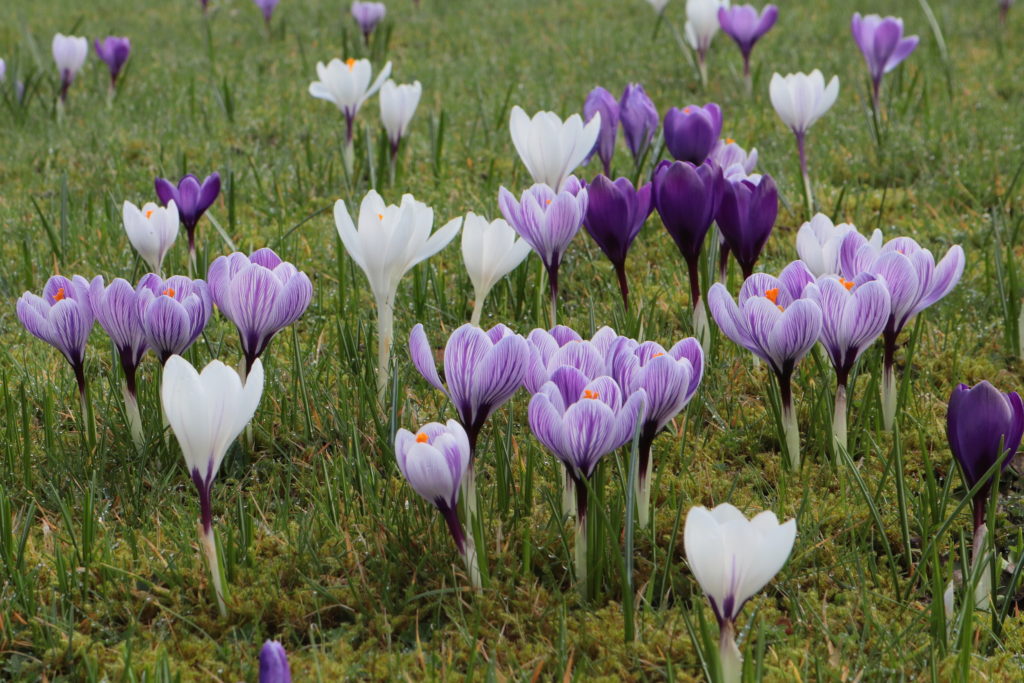
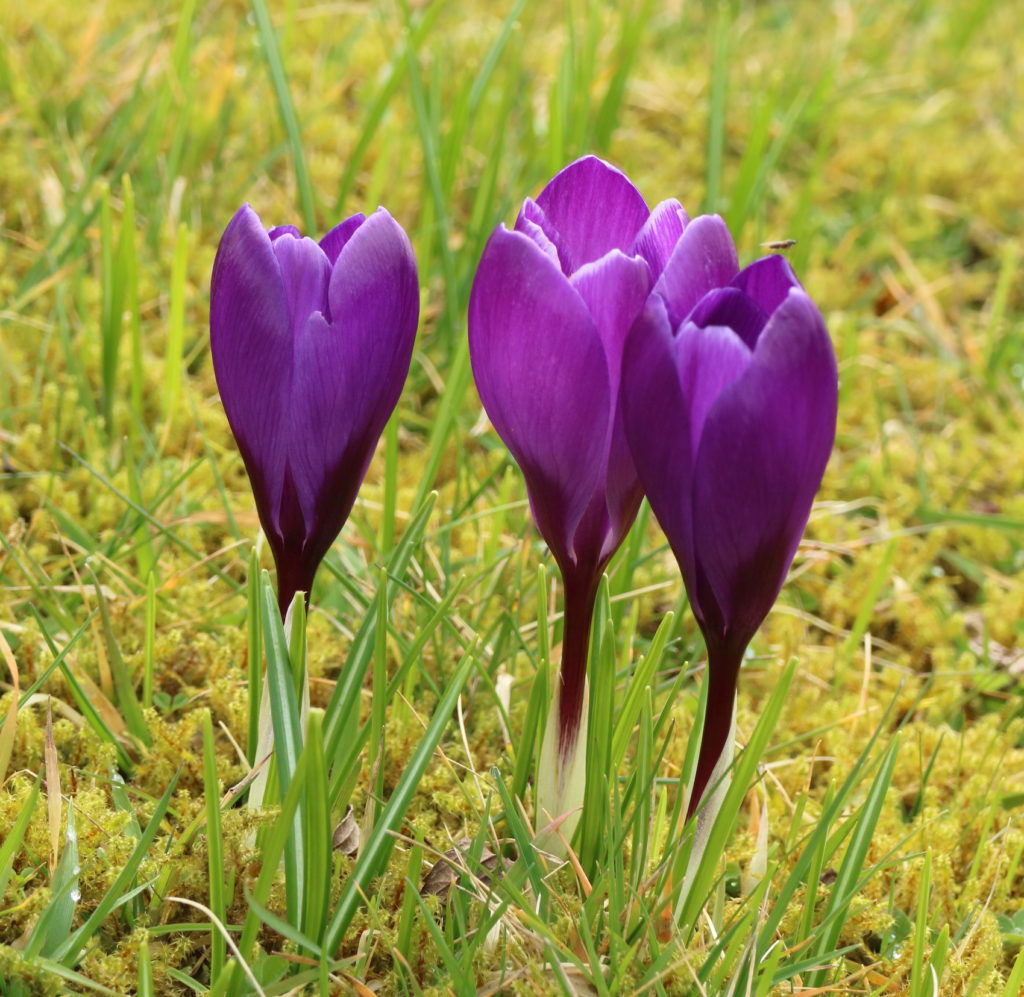
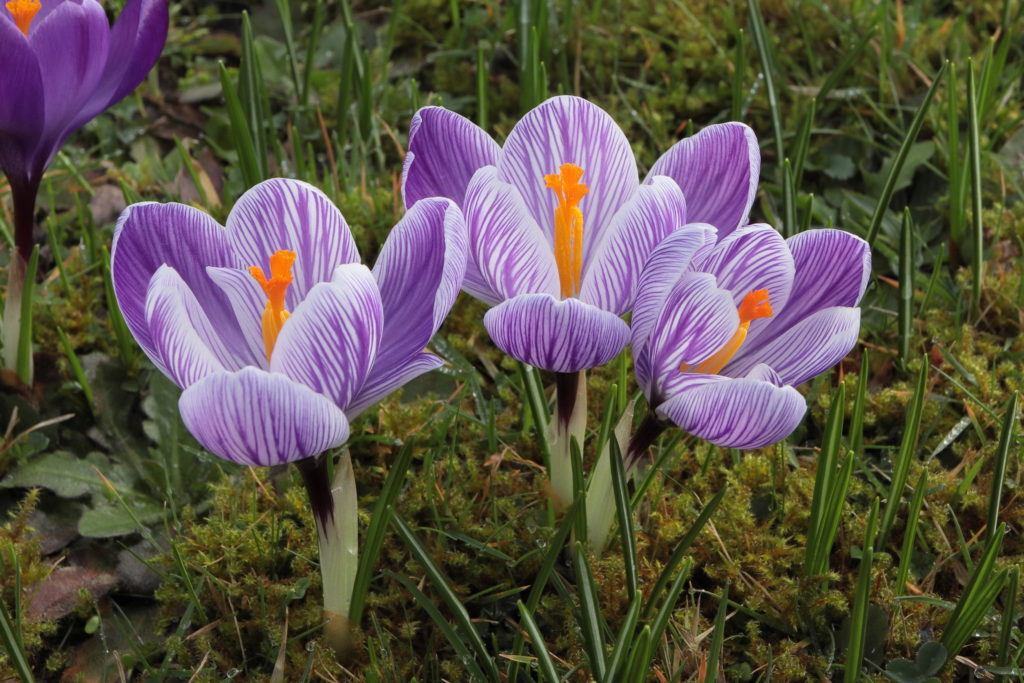
The style is variable in length, but should lift the stigma above the anthers:
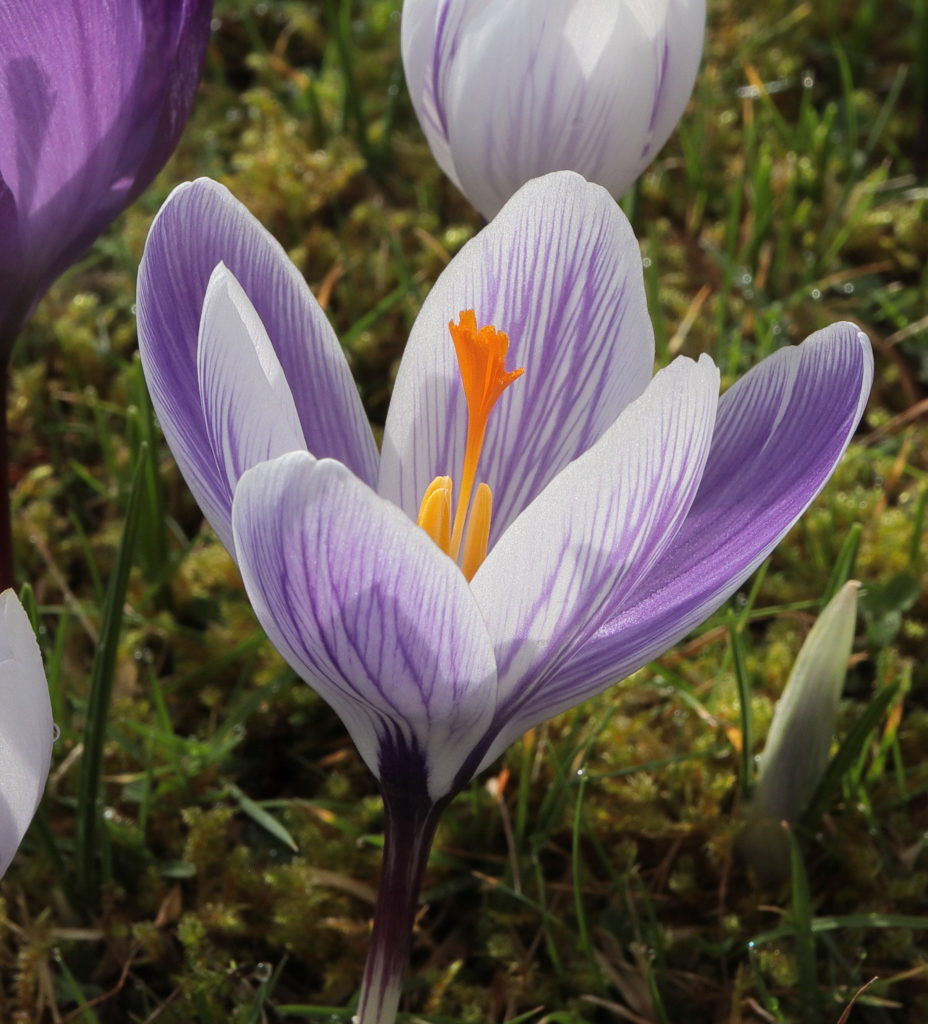
‘White Crocus’, C. vernus (C. albiflorus) is typically white-flowered, but can come in shades of purple, usually pale. Tepals are narrower than the previous (4–12 mm wide, vs. 9–20 mm in C. neapolitanus, according to Stace). The style is shorter than the stamens.
Note that the application of the very familiar name ‘Crocus vernus’ is here restricted to what was previously referred to as ‘Crocus vernus ssp. albiflorus’ or C. albiflorus. Previously-included forms, such as those strongly-coloured plants above, are now transferred to C. neapolitanus. It follows that an unknown – but perhaps large – proportion of the existing 79 Cumbrian records of ‘C. vernus’ would be referred to C. neapolitanus under the new taxonomy.
To give an indication of the frequency of crocuses in Cumbria, the following are currently the numbers of individual records in the BSBI’s Distribution Database, under the various names, old and new:
Spring-flowering:
- Crocus neapolitanus or C. purpureus = 0, C. ‘vernus’ = 79 (but see comment above);
- Crocus tommasinianus = 16;
- Crocus × luteus or C. × stellaris (i.e. C. angustifolius × C. flavus) = 4
Autumn-flowering:
- Crocus nudiflorus = 13;
- Crocus speciosus = 2
[None of the other taxa treated in ‘Stace 4’ currently have any Cumbrian records in the database, viz. : CC. ancyrensis; biflorus; chrysanthus; chrysanthus × biflorus; kotschyanus; longiflorus; pulchellus; sativus; sieberi.]
JR 24 February 2019
⇠ back to “Look out for…”